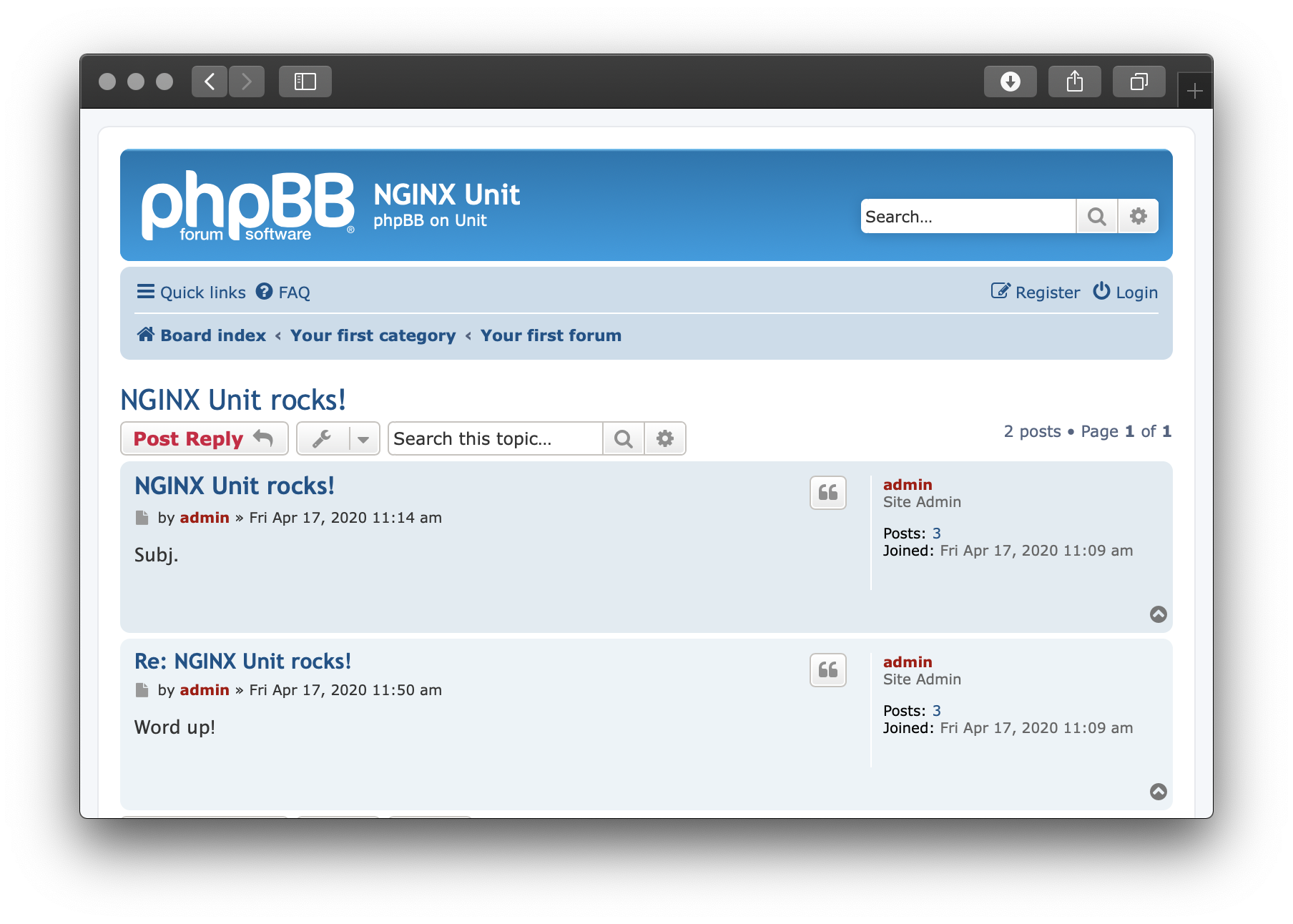phpBB§
To run the phpBB bulletin board using Unit:
Install Unit with a PHP language module.
Install and configure phpBB’s prerequisites.
Install phpBB’s core files. Here, we install it at /path/to/app/; use a real path in your configuration.
Run the following command (as root) so Unit can access the application directory:
# chown -R unit:unit /path/to/app/
Note
The unit:unit user-group pair is available only with official packages, Docker images, and some third-party repos. Otherwise, account names may differ; run the ps aux | grep unitd command to be sure.
For further details, including permissions, see the security checklist.
Next, prepare the app configuration for Unit (use real values for share and root):
{ "listeners": { "*:80": { "pass": "routes" } }, "routes": [ { "match": { "uri": [ "/cache/*", "/common.php*", "/config.php*", "/config/*", "/db/migration/data/*", "/files/*", "/images/avatars/upload/*", "/includes/*", "/store/*" ] }, "action": { "return": 404 } }, { "match": { "uri": [ "/", "*.php", "*.php/*" ] }, "action": { "pass": "applications/phpbb/direct" } }, { "action": { "share": "/path/to/app$uri", "fallback": { "pass": "applications/phpbb/index" } } } ], "applications": { "phpbb": { "type": "php", "targets": { "direct": { "root": "/path/to/app/" }, "index": { "root": "/path/to/app/", "script": "app.php" } } } } }
Note
The difference between the pass targets is their usage of the script setting:
- The direct target runs the .php script from the URI or defaults to index.php if the URI omits it.
- The index target specifies the script that Unit runs for any URIs the target receives.
Upload the updated configuration. Assuming the JSON above was added to
config.json. Run the following command as root:# curl -X PUT --data-binary @config.json --unix-socket \ /path/to/control.unit.sock http://localhost/config/
Note
The control socket path may vary; run unitd -h or see Startup and Shutdown for details.
After a successful update, your app should be available on the listener’s IP address and port:

Browse to /install/app.php to complete your installation. Having done that, delete the install/ subdirectory to mitigate security risks:
$ rm -rf /path/to/app/install/